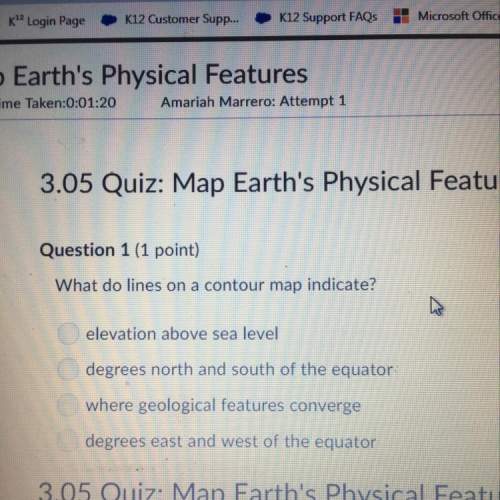PLEASE PLEASE PLEASE HELP
Info:
Charles’ work showed that gases expand in a...

PLEASE PLEASE PLEASE HELP
Info:
Charles’ work showed that gases expand in a linear manner as the temperature is increased and contract linearly as the temperature is decreased, given that the pressure remains the same.
A graphical plot of the temperature versus volume of a gas will produce a straight line. If different gases are studied and the temperature-volume data is plotted on a graph, the extrapolation of the graphs will all intersect at the same temperature, -273°C. The Kelvin equivalent of this temperature is 0 K, or absolute zero. Remember to convert from Celsius to Kelvin is:
K = °C + 273
The relationship between Kelvin temperature and the volume of gas is expresses as Charle’s Law: the volume of a confined gas at a constant pressure is directly proportional to its Kelvin temperature or:
V1 / T1 = V2 / T2
Online Lab
The procedure shown in the video above has been performed and data collected. You can find the data on this data sheet. Use this data to complete the analysis and conclusions below.
Complete the following analysis and conclusion.
Calculate the Kelvin temperatures of the water and record your answers in the data table.
Find the change in the volume of air in the flask from your data and record in data table.
Use the equation V1 / T1 = V2 / T2 to calculate the expected volume of air when cooled in tap water.
How do the expected final volume and the actual final volume compare?
What is the significance of elevating or lowering the flask until the water level in the flask is even with the water level in the beaker or container?
Construct a graph of the data. Plot the volume of the gas at room temperature in tap water and in ice water on the y axis. Plot the Kelvin temperature on the x-axis. Print out graph paper for your plot. (Click here for graph paper.)
Extend the plotted line downward until it crosses the temperature axis. This process of extending a graph beyond the experimental data is called extrapolation.
At which temperature is the line predicted to cross the x-axis?
At which temperature did the line actually cross the x-axis?
Account for any deviation betweeen the predicted temperature line extrapolation and the actual line extrapolation.
Real World Chemistry - Explain why bottled gas containers are equipped with a relief valve?
Here is the data from the table: Finding Absolute Zero Experimentally Data Sheet
Part A Part B
Room Temperature (ºC) 23 ºC 23 ºC
Temperature of boiling water (ºC) 100 ºC 99 ºC
Temperature of boiling water (K)
Final temperature of cooling water (ºC) 23 ºC 7 ºC
Final temperature of cooling water (K)
Volume of air at higher temperature (mL) 150 mL 250 mL
Change in volume of air in bottle (mL) 12.0 mL 73.0 mL
Volume of air at lower temperature (mL) 138 mL 177 mL
Please please help PLEASE. I need all parts answered for me to rate you brainliest.

Answers: 3
Another question on Chemistry

Chemistry, 22.06.2019 16:00
How could a student test the effect of removing heat from a gas that is stored in a sealed container? what must occur in order for matter to change states?
Answers: 2

Chemistry, 23.06.2019 02:00
What can be done to make a solid solute dissolve faster in a liquid solvent?
Answers: 1

Chemistry, 23.06.2019 04:00
Silver reacts with oxygen to produce silver oxide. (write balanced chemical equation and identify type of chemical reaction.)
Answers: 1

Chemistry, 23.06.2019 06:00
What physical property of gold makes panning a useful way to get gold from streams?
Answers: 2
You know the right answer?
Questions

Mathematics, 31.01.2020 19:02


English, 31.01.2020 19:02



History, 31.01.2020 19:02


Mathematics, 31.01.2020 19:02

History, 31.01.2020 19:02

History, 31.01.2020 19:02




Mathematics, 31.01.2020 19:02

Mathematics, 31.01.2020 19:02



History, 31.01.2020 19:02


Mathematics, 31.01.2020 19:02




